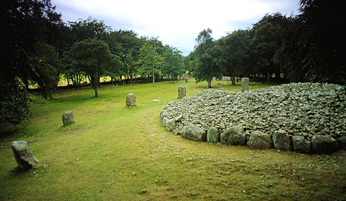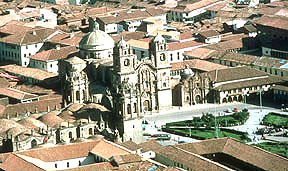Click on image for full size
Windows Original
Related links:
Native American Astronomy
By 30,000 B.C,. Asian hunter-gatherers had crossed the Bering Strait into North America. These people were the first to inhabit this new land and so they are known as the Native Americans of North America.Over time, these people broke into tribes and these tribes were located from the far northern reaches of Canada to the southwest of present-day California. Though broken into tribes, these people held many similar thoughts and practices about the sky and the heavens.
One thing that most of the tribes of North America (and Central and South America for that matter!) held sacred was the four cardinal directions: north, east, south and west. Many of the tribes said the directions were represented by the stars above and that those stars were actually gods overseeing life on Earth. Many tribes based their building architecture or city layout on these four cardinal directions.
Another common trend among Native American tribes was the fact that people weren't interested in time for the sake of time itself. There were no clocks and no need for keeping an exact daily schedule as Americans do today. And so time was told by the ebb and flow of tides, by the ripening of the strawberries, by the Sun's position in the sky, by watching stars and constellations rise and fall, or by knowing when the bears wake from hibernation. These people had no exact concept of a solar year which we base our calendar on now, but they did track and name the lunar cycles. In fact, the first signs of skywatching among the Native Americans are rocks and bones that have scratches that corresponded with the lunar cycle. Lunar cycles were named after what was happening at the time. For instance, one tribe named one lunar cycle "laying geese" and another cycle "coming caribou".
These are just some common threads between the tribes of North America. Let's look at some specific tribes and regions to get a fuller picture of the astronomical practices of these ancient people. The Skidi Band of the Pawnee tribe are often seen as the most sophisticated starwatchers. The stars
for the Chumash of California were gods who
interacted in the life of
people on Earth. The Zuni of the Southwest were avid trackers of the movement of the Sun. And the area of Chaco
Canyon is filled with evidence of sophisticated astronomical activity.














